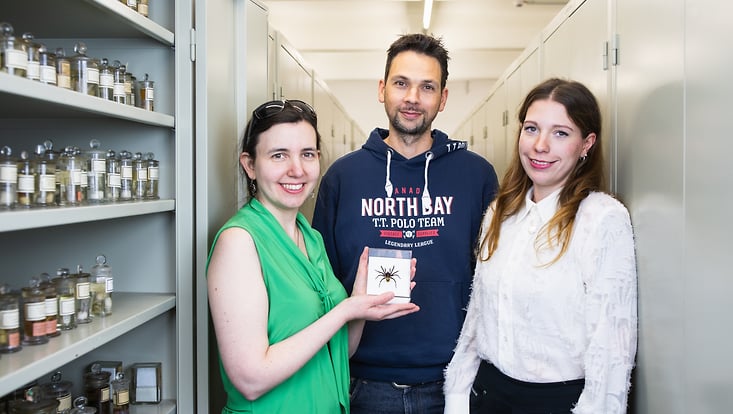Unveiling the X-Ray Sky
31 January 2024, by Newsroom editorial office

Photo: MPE, J. Sanders for the eROSITA consortium
Today, the German eROSITA consortium, including researchers from Universität Hamburg, published its share of data from the first all-sky survey conducted with the eROSITA soft X-ray imaging telescope aboard the Spectrum-RG satellite. With 900,000 different sources, the first eROSITA all-sky survey catalogue (eRASS1) is the largest X-ray catalogue published.
Along with the data, the consortium released a series of academic papers, which present a wide range of research topics and results, e.g., on the habitability of planets and the discovery of the largest cosmic structures. The first 6 months of eROSITA observations alone provided roughly 60% more sources than the previous 60 years of X-ray astronomy altogether. Now available to the global scientific community, this data will revolutionize our knowledge about the Universe at high energies. By planning the mission and conducting research on stars and galaxy clusters, Universität Hamburg took on a significant role in the consortium.
The eROSITA observations were carried out from 12 December 2019 to 11 June 2020. The first catalogue (eRASS1) covers half of the sky, i.e., the data attributed to the German eROSITA consortium. The over 900,000 sources comprise some 710,000 supermassive black holes in distant galaxies; 180,000 X-ray emitting stars in our own Milky Way; 12,000 galaxy clusters; and a few other exotic sources such as binary stars, supernova remnants, pulsars, and other objects.
Fifty new academic publications
“These are mind-blowing numbers for X-ray astronomy,” says Andrea Merloni, eROSITA principal investigator and first author of the eROSITA catalogue paper. “The first data release alone will revolutionize our view of extreme objects in the Universe,” says Prof. Marcus Brüggen, professor of astrophysics at Universität Hamburg and a member of the eROSITA steering committee.
Timed to coincide with the data release, the German eROSITA Consortium submitted about 50 new scientific publications to peer-reviewed journals—in addition to the over 200 contributions the team had published before the data release. Most new papers appeared today (see the link below). They present numerous new discoveries, including a statistical analysis of supermassive black holes flickering at cosmological distances; a warm-hot filament of pristine gas between galaxy clusters; 2 two new quasiperiodic eruptions from black holes; and 2 studies depicting how X-ray irradiation from a star may affect the atmosphere and water retention of orbiting planets.
Universität Hamburg scientists identify 140,000 stars
One publication describes how a team involving scientists from Hamburg identified roughly 140,000 stars that emit X-ray light—by far the largest sample to date. “The X-ray radiation originates in the hot corona that surrounds the stars, possibly affecting orbiting planets and things that happen on the planets’ surfaces,” says Dr. Jan Robrade from the Hamburg Observatory, one of the study’s key authors.
This first eRASS data release not only provides a source catalogue, but also images of the X-ray sky at multiple X-ray energies. “There is more data to come. This is the result of a six-month scan of the sky only. We will publish more data in the future,” says Marcus Brüggen.
The research activities in Hamburg are funded by the German Aerospace Center and the Cluster of Excellence Quantum Universe.
Publications
Merloni A., et al. The SRG/eROSITA all-sky survey, First X-ray catalogues and data release of the Western Galactic hemisphere Astronomy & Astrophysics, volume 682, A34
Freund et al., The SRG/eROSITA all-sky survey -Identifying the coronal content with HamStar, A&A


